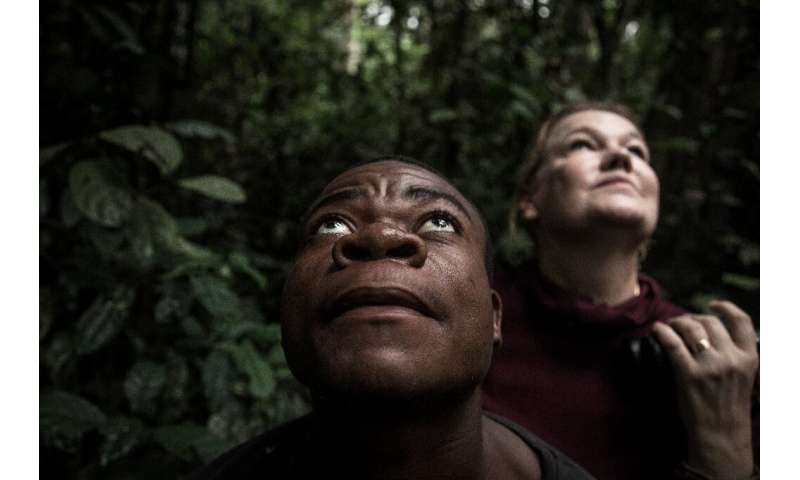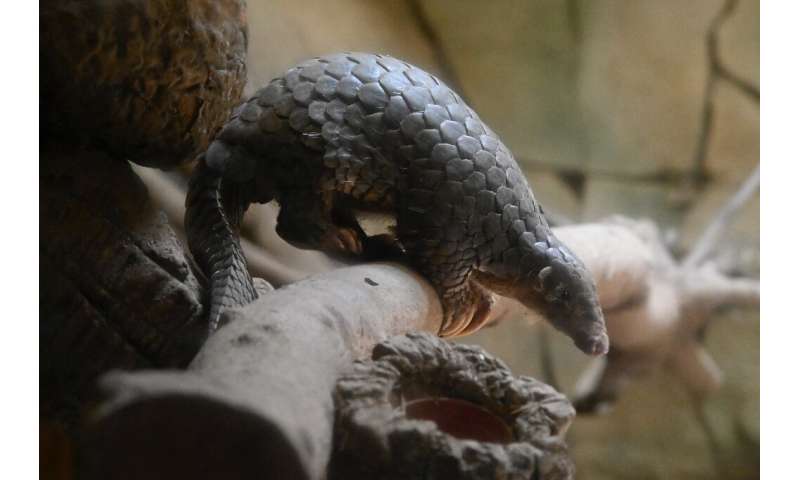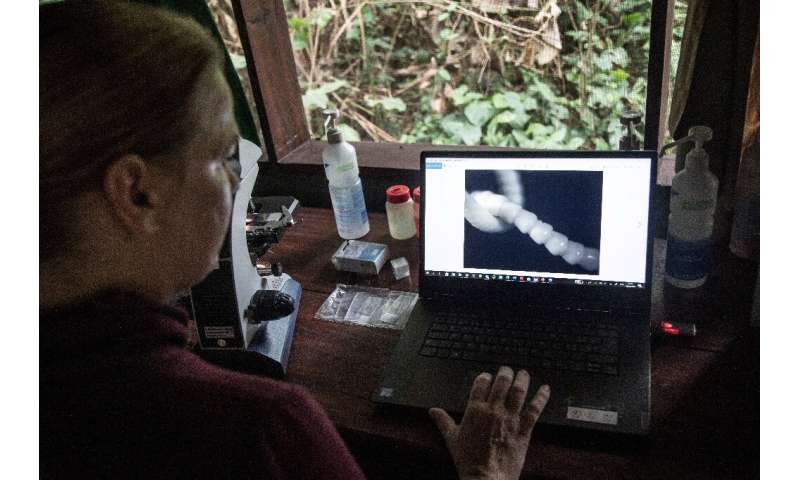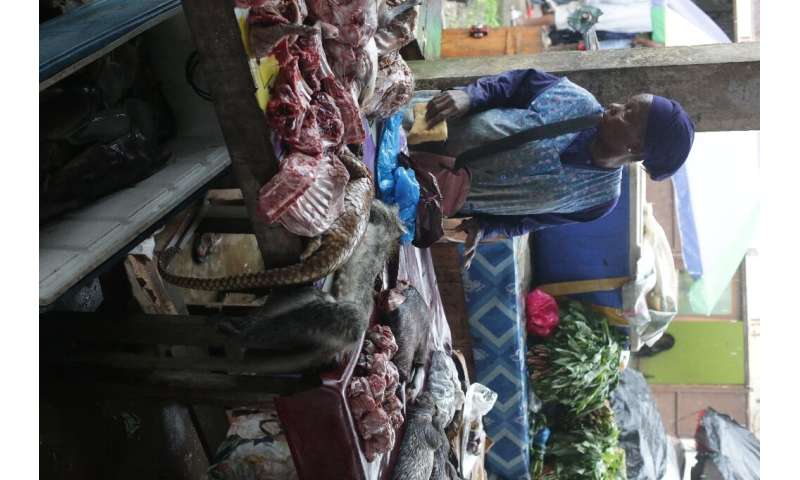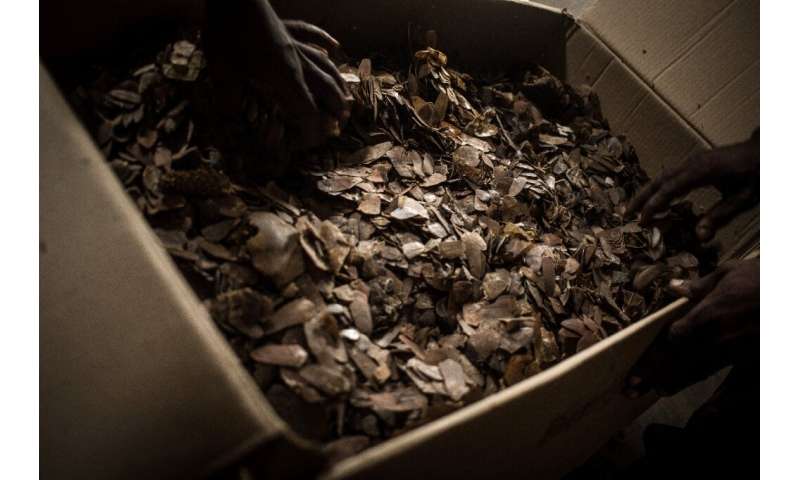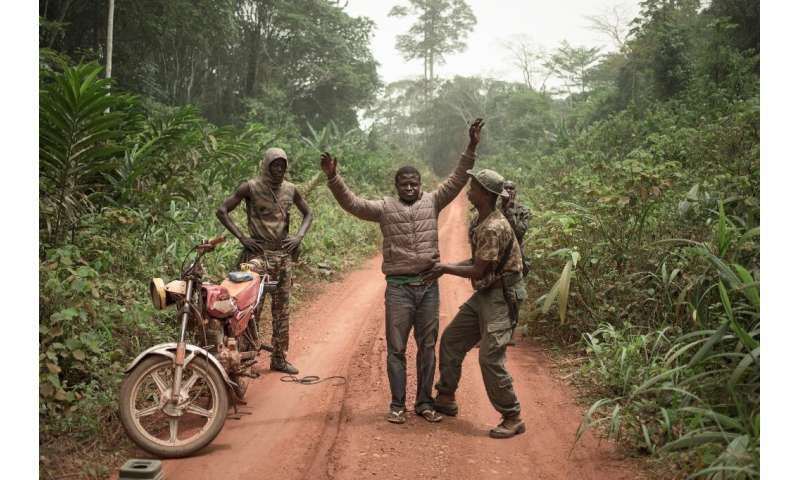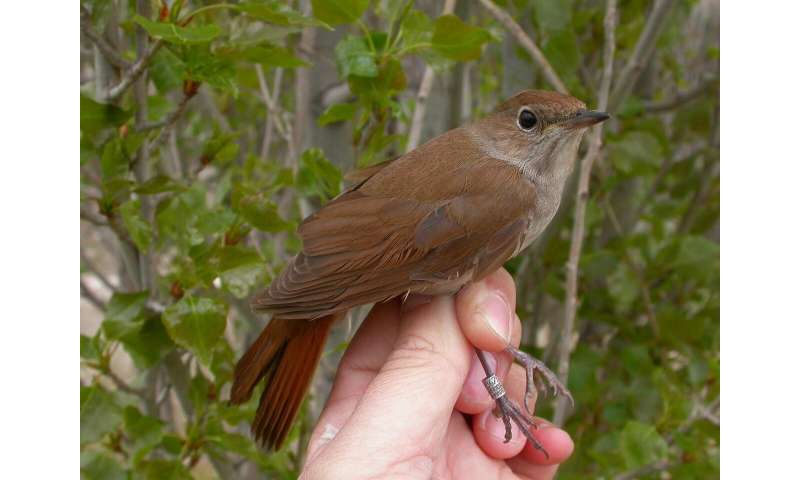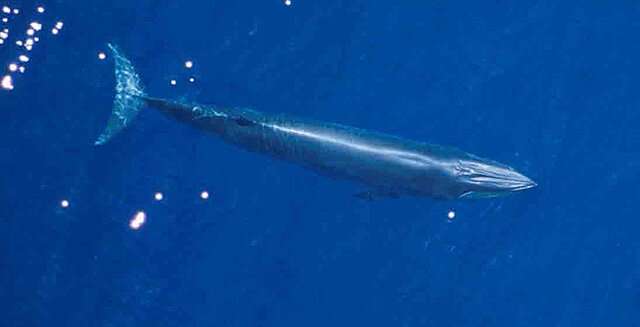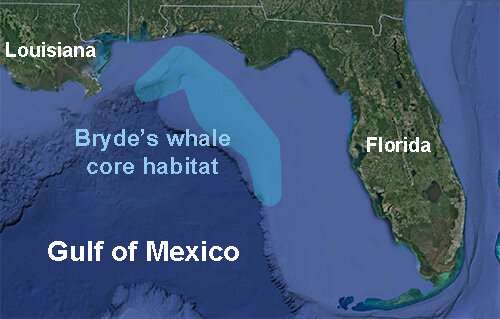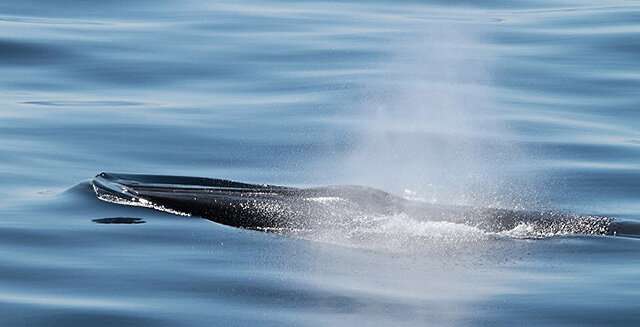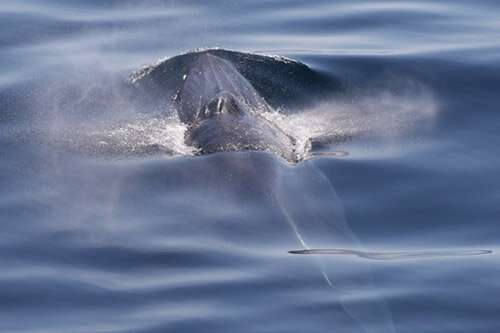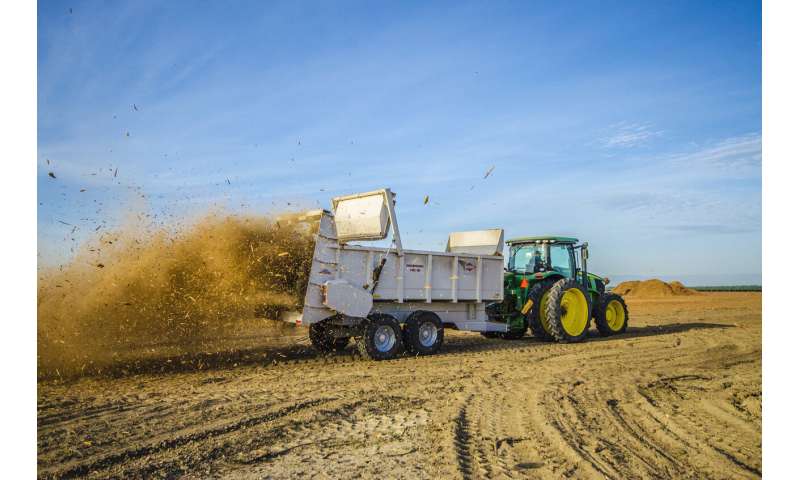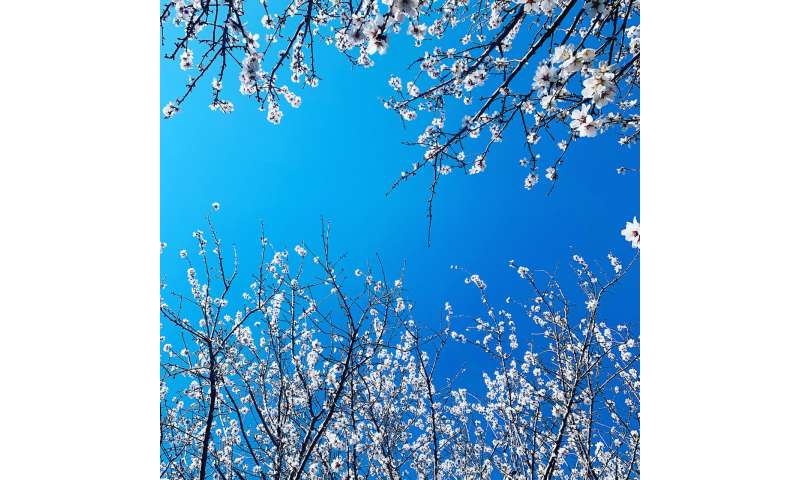Organic soybean producers can be competitive using little or no tillage
by Pennsylvania State University
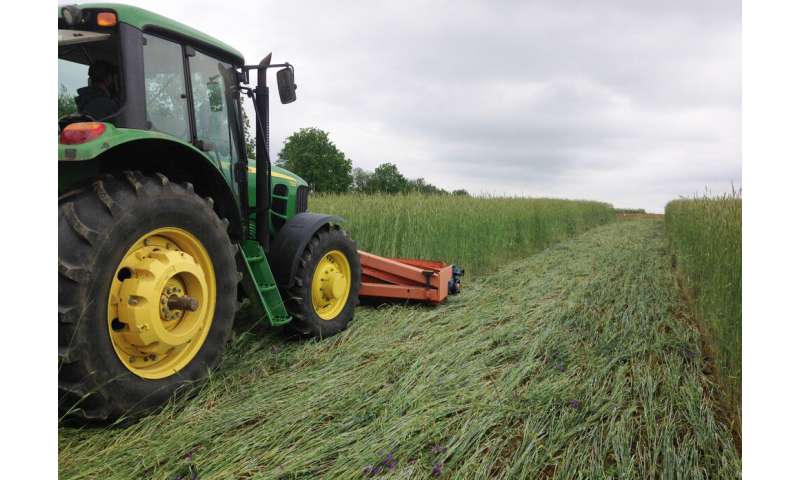
Cereal rye shown here is being mechanically terminated with a roller-crimper in an organic no-till soybean system. Researchers compared tillage-based soybean production with reduced-tillage soybean production. Credit: John Wallace/Penn State
Organic soybean producers using no-till and reduced-tillage production methods that incorporate cover crops—strategies that protect soil health and water quality—can achieve similar yields at competitive costs compared to tillage-based production.
That's the conclusion of a new study by researchers in Penn State's College of Agricultural Sciences. These findings are significant, according to lead researcher John Wallace, assistant professor of weed science, because they may contribute to increased sustainable domestic production of organic soybeans.
The experiment, which focused on finding ways to reduce the intensity or frequency of tillage or soil disturbance in organic field crop production systems, was conducted on certified organic land at Penn State's Russell E. Larson Agricultural Research Center. Researchers compared tillage-based soybean production preceded by a cover crop mixture interseeded into corn, with reduced-tillage soybean production preceded by a roller-crimped cereal rye cover crop that was sown after corn silage.
According to researchers, the reduced-tillage soybean sequence resulted in 50% less soil disturbance compared to the tillage-based soybean sequence across study years, promising substantial gains in water quality and soil conservation. In addition, budget comparisons showed that the reduced-tillage soybean sequence resulted in lower input costs than the tillage-based soybean sequence. However, the reduced-tillage system was about $46 per acre less profitable because of slightly lower average yields.
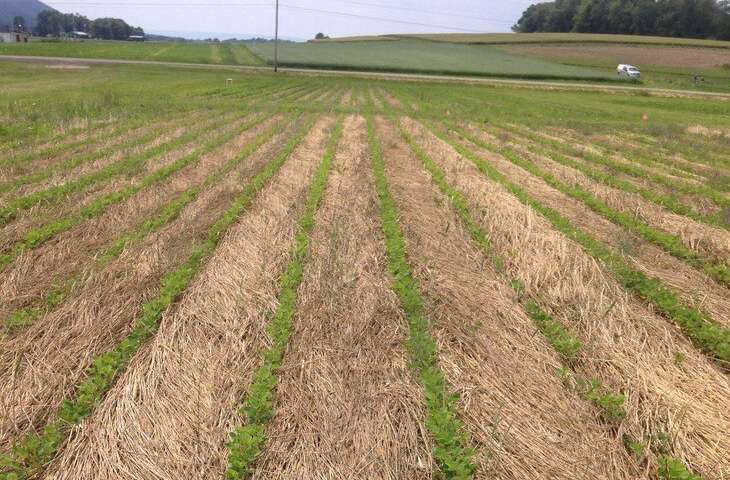
"Organic grain producers are interested in reducing tillage to conserve soil and decrease labor and fuel costs," Wallace said. "In our research, we examined agronomic and economic tradeoffs associated with alternative strategies for reducing tillage frequency and intensity in a cover crop-soybean sequence, within a corn-soybean-spelt organic cropping system."
Weeds are a serious problem for organic growers of field crops because growers are unable to kill them with herbicides. Significantly, researchers found that weed biomass did not differ between soybean-production strategies. That matters because tillage and cultivation are the primary methods used by organic producers to reduce weeds and other pests.
Tillage-based soybean production marginally increased grain yield by fewer than three bushels per acre compared with the reduced-tillage soybean system.
The study, recently published in Renewable Agriculture and Food Systems, is the latest in a 15-year-long line of organic no-till research conducted in the College of Agricultural Sciences and led by William Curran, professor emeritus of weed science. Although he retired last year, Curran also participated in this study. Organic no-till field crop research continues at Penn State under the direction of Wallace and entomologist Mary Barbercheck.
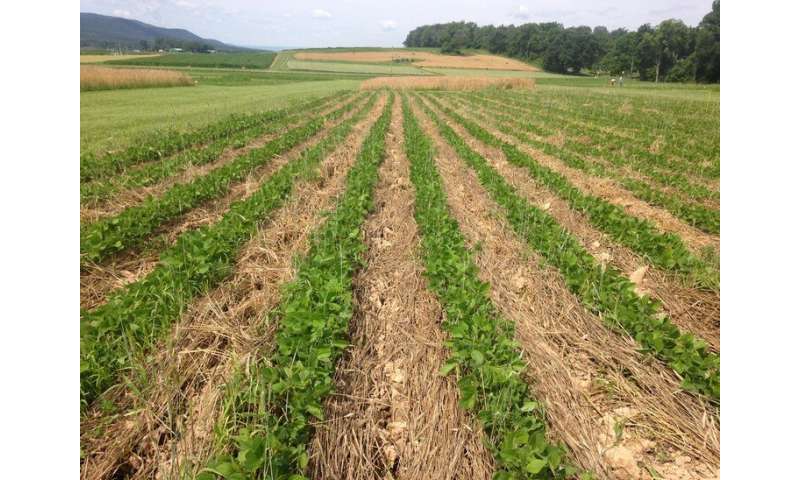
Finding ways to allow more domestic production of organic soybeans is a huge issue, Wallace contends, because more than 70% of the organic soybeans that feed organically produced poultry in the U.S. are imported. They primarily come from Turkey, India and Argentina.
"There have been many cases of fraudulent imports—crops that were not really produced organically—coming from some of those countries, and that's depressed the premiums that U.S. producers are getting because we're being flooded with these imports," Wallace said. "And they're driving down the prices that U.S. producers can get."
Wallace added that he'd like to help American organic growers, especially those in the Mid-Atlantic region, produce more soybeans using environmentally responsible no-till and reduced-tillage methods.Implementing no-till and cover crops in Texas cotton systems
More information: John M. Wallace et al, Drill and broadcast establishment methods influence interseeded cover crop performance in organic corn, Renewable Agriculture and Food Systems (2020). DOI: 10.1017/S174217052000006X


